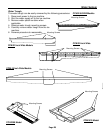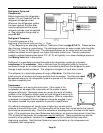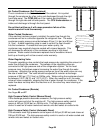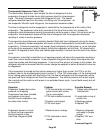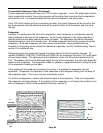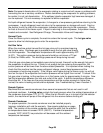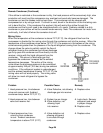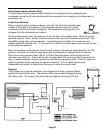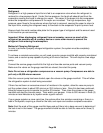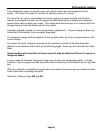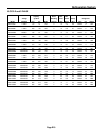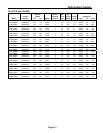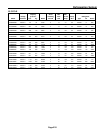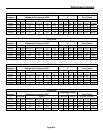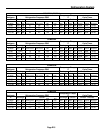
Refrigeration System
Page E8
Refrigerant
Refrigerant in a high-pressure liquid form is fed to an expansion valve where the refrigerant is
reduced to a low-pressure liquid. Under this low pressure, the liquid will absorb heat from the
evaporator causing the liquid to change to a vapor. This vapor is the drawn into the compressor
where the temperature and pressure of the vapor are increased. The high temperature, high
pressure vapor flows to the condenser where the heat is removed, causing the vapor to return to
the liquid form, making the refrigerant ready to flow back to the evaporator to pick up more heat.
Always check the serial number data plate for the proper type of refrigerant and the amount used
in the machine you are servicing.
Important: When discharging refrigerant from an icemaker, recover as much of the
refrigerant as possible with a recovery device or some other means to prevent the
refrigerant from entering the atmosphere.
Method of Charging Refrigerant
In order to achieve a properly charged refrigeration system, the system must be completely
evacuated.
To achieve a complete evacuation you will need a service gauge manifold with properly maintained
hoses, and a vacuum pump capable of pulling a 50-micron vacuum. This will require a two-stage
pump.
Connect the service gauge manifold to the high and low side service ports and vacuum pump.
Make sure the valves on the gauge manifold are closed, then start the pump.
Note: Do not use a refrigeration compressor as a vacuum pump. Compressors are able to
pull only a 50,000-micron vacuum.
After the vacuum pump has been started, open the valves on the gauge manifold. This will allow
the refrigeration system to start being evacuated.
If there has not been an excessive amount of moisture in the system, allow the vacuum pump to
pull the system down to about 200 microns or 29.9 inches or less. Once this has been achieved,
allow the vacuum pump to operate for another 30 minutes. Then close the valves on the gauge
manifold and stop the vacuum pump. Then watch your gauges. A rise to 500 microns in three (3)
minutes or less indicates a dry system under a good vacuum.
If your gauge registers a more rapid rise, the system either has moisture remaining or there is a
leak in the system, requiring a check for the leak, and repair and another complete evacuation.
Note: Seal the ends of the gauge manifold hose and pull them into a deep vacuum to determine if
the leak is not in the hoses. The gauge manifold should be able to hold the vacuum for three (3)
minutes.



